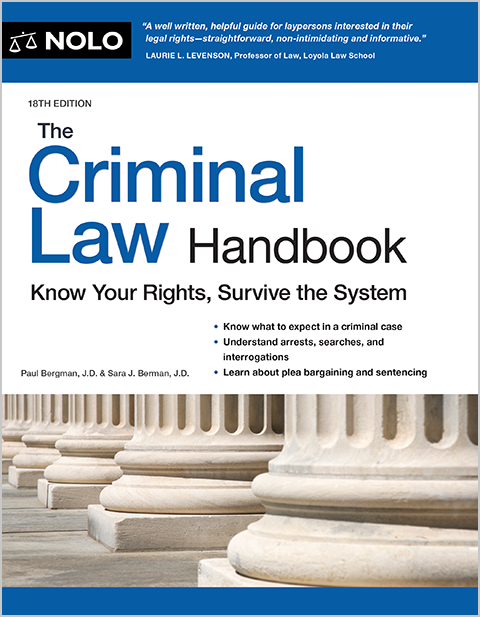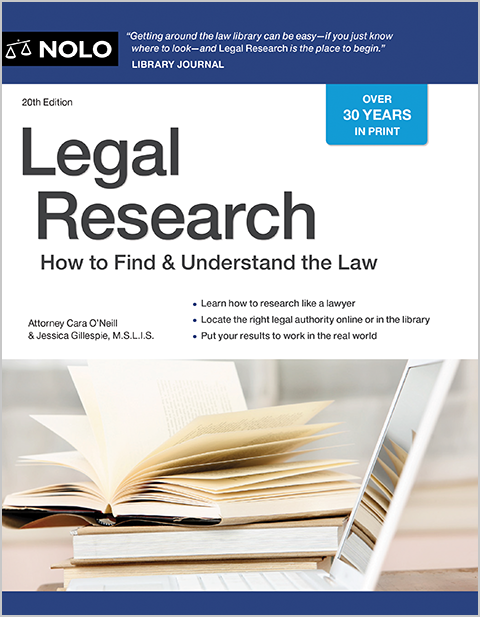Burglary charges often carry stiff felony penalties. Learn what a prosecutor must prove to secure a burglary conviction and what defenses may be available.
Criminal laws in each state provide specific definitions of burglary. In the past, many jurisdictions defined burglary as breaking and entering another's home at night with the intent of committing theft. Today, though, burglary laws are generally much broader. Read on to learn how laws define and penalize burglary, possible defenses to burglary charges, and examples of burglary offenses.
What Is Burglary?
Although the exact definition of burglary may be a little different from state to state, the crime typically involves a culprit:
- entering or remaining in a building or structure
- without permission, and
- with the intent to commit a crime.
A prosecutor must prove each element beyond a reasonable doubt to secure a conviction.
Understanding Burglary Charges
Breaking into someone's house to steal their belongings is one type of burglary, but the legal definition includes many more scenarios. Below we review each element of burglary and what it means.
What Is an Unauthorized Entry?
Burglary requires an unauthorized entry (or presence—discussed next) in a building or structure. Examples of unauthorized entry include picking a lock, kicking down a door, or breaking a window to get inside. While these are clear examples, the law considers even the slightest amount of force to constitute an entry. So pushing up an open window or simply opening an unlocked door can satisfy this element.
Even a partial entry can constitute burglary. For example, assume that the police arrest a suspect who they caught reaching an arm through an open window to grab a Rolex watch. If the other elements of burglary are met, the suspect can be convicted of burglary.
Other examples of unauthorized entries include being in a restricted or prohibited area or using false pretenses to gain access to a home. For instance, a store customer who goes into a restricted employee breakroom hoping to grab some purses has committed burglary. It's also an unauthorized entry to gain access to someone's home by pretending to be there to service a gas leak.
"What Is Unlawfully Remaining in a Structure?
In many states, a person who's legally overstayed their welcome can commit a burglary as well. Rather than an unlawful entry, this culprit initially had permission to enter but then unlawfully remained in the structure with the intent to commit a crime. Say a party guest hides in a closet after the host tells everyone to go home. The guest saw some expensive jewelry lying out and plans to steal it after the host falls asleep. Even though the initial entrance into the home was lawful, staying there without permission and intending to steal something makes it a burglary.
What Is a Building or Structure?
While this answer seems easy enough, you might be surprised how broadly state laws define "buildings and structures." The definitions often include vehicles, storage sheds, abandoned buildings, and any structure suitable for protection from the elements (like a tent).
Additionally, most states punish burglary of "residences," "dwellings," or "habitations" more harshly than other buildings. What constitutes a home will depend on state law. A common definition includes any place suitable for overnight accommodation. This could be a hotel room, dorm, RV, tent, or even a partially built home, if electricity, heat, and water are available.
What Is Intent to Commit a Crime?
The last element of a burglary offense requires the prosecutor to prove what was going on in the suspect's mind when they unlawfully entered the structure—did the suspect enter with the intent to commit a crime?
Evidence of intent. If the suspect completed the crime (such as theft or assault), the prosecutor can present evidence of that crime. However, say the suspect was arrested or fled the scene before completing the crime. The suspect still committed burglary, but short of their confession, a prosecutor may need to present circumstantial evidence of their intent. For instance, the police catch a person attempting to climb into a basement window. The person has a large backpack containing a lock pick, wire cutters, a knife, and duct tape. A jury could easily conclude that the person was entering the house intending to commit a crime, likely to steal or even harm someone.
Any crime will do. Generally, illegally entering a building with the goal of committing a felony or some type of theft qualifies as a burglary. Many states have expanded their laws to include intent to commit any crime, including misdemeanors. For example, a suspect may enter a building with the intent to vandalize it or assault someone. Both are sufficient for a burglary conviction. Some states provide harsher penalties if the person intends to commit a felony rather than a misdemeanor.

What Are the Different Degrees of Burglary?
Most states divide burglary offenses into two or more degrees of severity, reserving the harshest penalties for offenses that involve the greatest risk of harm to persons.
First-Degree Burglary or Home Invasion
First-degree burglary offenses generally carry the harshest penalties. This offense level usually involves occupied dwellings or other aggravating factors, such as armed burglaries. The presence of people or the danger of carrying a weapon makes these burglary offenses particularly dangerous. These offenses might carry even harsher penalties if both factors are involved (armed home invasion) or someone is injured during the offense.
Second-Degree Burglary
Second-degree offenses may apply to burglarizing unoccupied dwellings or non-residential buildings, such as offices, schools, or storage facilities. Certain factors could increase the penalties. For instance, some states single out harsher penalties for burglarizing public utilities or places of worship. Another common penalty enhancement applies when someone burglarizes a pharmacy, clinic, or hospital with the intent to steal drugs.
Third-Degree Burglary
States that further divide burglary offenses often apply the least severe penalties to burglaries involving vehicles (rather than buildings) or when the perpetrator's intended crime is a misdemeanor (such as vandalism). It's also common for states to use third- and fourth-degree crimes as catch-all provisions for circumstances that don't fall neatly into a more serious category of burglary.
What Are Examples of Burglary Offenses?
Below are a few scenarios that could result in a burglary conviction.
Burglary Case Example 1
Phil is charged with burglary. The prosecution claims that Phil, wanting a birthday present for his girlfriend, went into the stockroom of a drugstore and took a bottle of perfume. Phil admits to taking the bottle but asks the judge to convict him only of petty theft, a misdemeanor.
Verdict: Phil can be convicted of burglary. In many states, entering a building open to the public with the intent to commit a crime is an unlawful entry. A store owner's permission to enter extends only to entry for legal purposes. In this case, Phil entered a restricted part of the store—the stockroom—intending to commit the crime of theft.
Burglary Case Example 2
Fred enters the home of his ex-wife Wilma by climbing through a window. Fred has threatened to harm his wife in the past, and he has a tire iron in his back pocket. Wilma hears Fred coming, runs to a neighbor's house, and calls the police. The police arrest Fred as he tries to run away through the back door.
Verdict: Fred has committed burglary. He entered Wilma's house without consent. The prior threats and the tire iron are circumstantial evidence showing that at the moment Fred entered Wilma's home, he intended to attack her with a deadly weapon (aggravated assault).
Burglary Case Example 3
Two 15-year-olds, Barney and Ted, have nothing to do, so they decide to bike to a construction lot and hang out in a partially constructed home. They brought some alcohol, marijuana joints, and spray paint with them. Neighbors see them sneaking in and call the cops, who show up just as Barney and Ted are shaking up the paint cans.
Verdict: Even though Barney and Ted didn't drink, smoke, or vandalize the place, they could be found guilty of burglary. Their state's burglary law makes it a crime to enter a building without permission and with intent to commit any offense, even a misdemeanor. In a state where only intent to commit theft or a felony constitutes burglary, prosecutors might charge them with criminal trespass.
What Are the Penalties for Burglary?
Every state punishes burglary offenses differently, but most make burglary a felony. A few states have misdemeanor burglary crimes for non-residential burglaries or burglaries of vehicles where the intended crime was a misdemeanor.
Below are common penalty ranges based on the degree of the offense. You need to look at your state's laws for more precise information.
- First-degree burglaries involving a home invasion or armed burglary are the most serious burglary offenses. This crime could carry a possible prison sentence of 20 years or more.
- Second-degree offenses involving non-residential structures or unoccupied homes may involve maximum sentences of 10 or 15 years.
- Third-degree burglary charges (catch-all offenses) may still be felonies but might carry sentences in the range of 3 to 7 years.
- Misdemeanor burglary charges generally impose up to a year of jail time.
Aggravating factors that could result in longer sentences or mandatory minimums include injuring or sexually assaulting an occupant during the burglary, committing the crime with accomplices, or being armed with a firearm or explosive. A defendant with prior felony or burglary convictions will also likely face harsher penalties.
What Are Possible Defenses to Burglary Charges?
A person charged with burglary might try to mount a complete defense or seek to reduce the charges.
A complete defense would be something like mistaken identity, especially if the person has an alibi. A defendant might try to reduce burglary charges by arguing certain elements of the crime haven't been met, such as the structure not meeting the definitions of a "dwelling." For instance, say the defendant entered a garage only attached to the home by an open breezeway. Or the defendant entered a van not knowing it was converted for living use. In these cases, the defense might argue the charges should be reduced from first to second degree because the defendant didn't burglarize a "home."
Other defense strategies include poking holes in the prosecution's case. A defendant might argue the prosecutor didn't prove intent to commit a crime (perhaps the defendant entered the structure to avert dangerous weather, not to steal). Or, if the defendant thought they had a right to be inside the property, they might argue they didn't knowingly enter the building without permission.
Talk to a Lawyer
If you're facing a criminal investigation or charges for burglary, talk to a criminal defense lawyer before answering any questions. Ask the court for a public defender if you can't afford a private attorney. Your lawyer can help you understand the charges and what's at stake and defend your rights.

